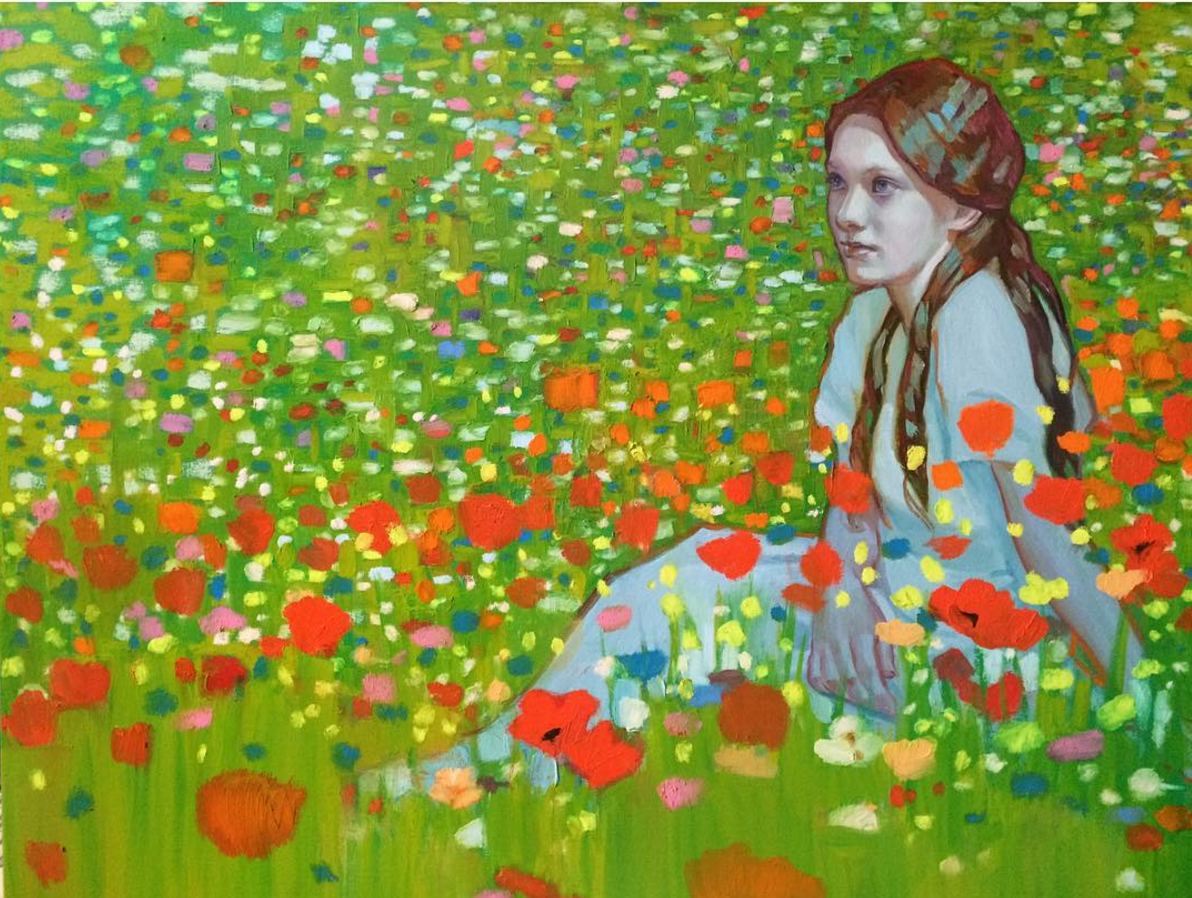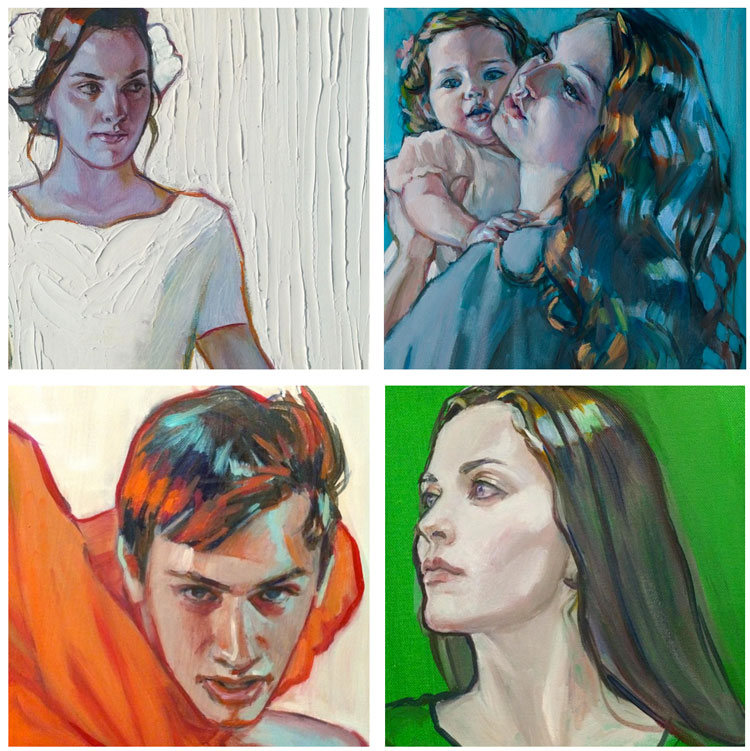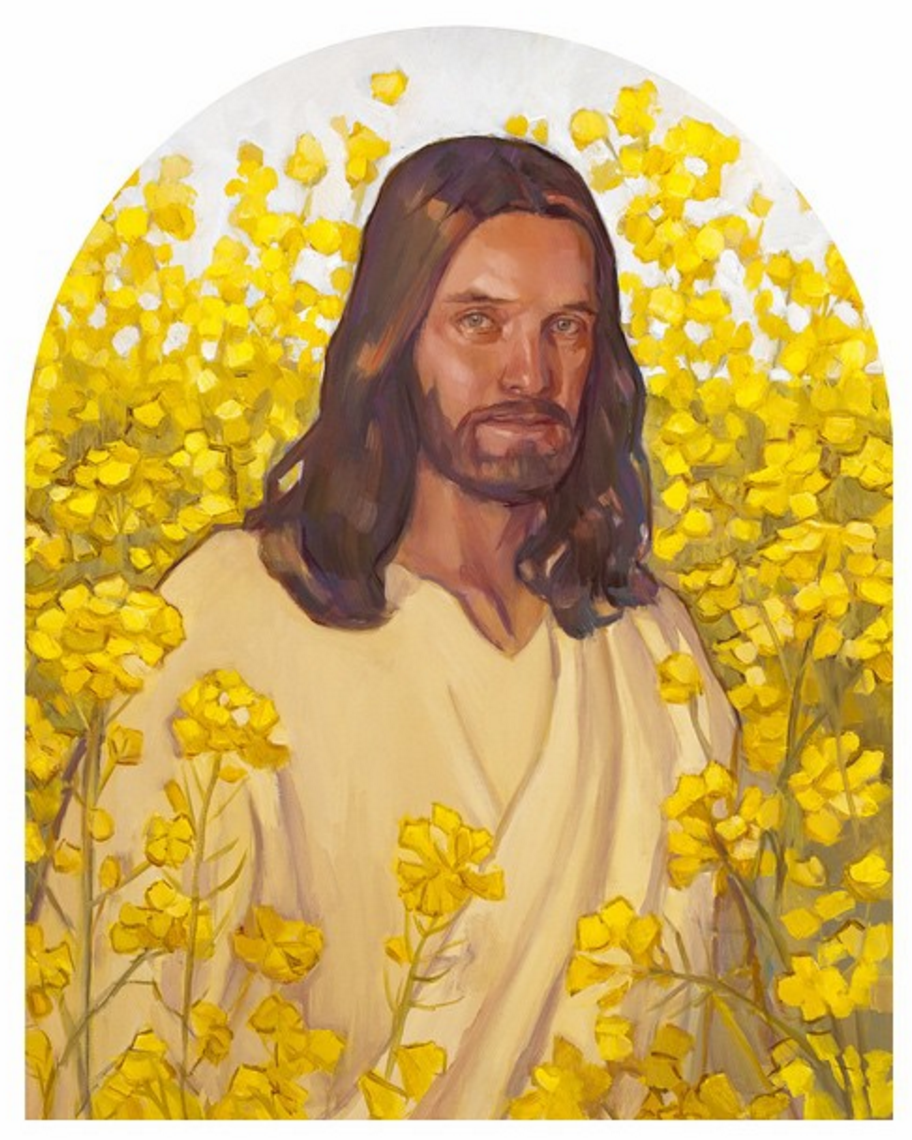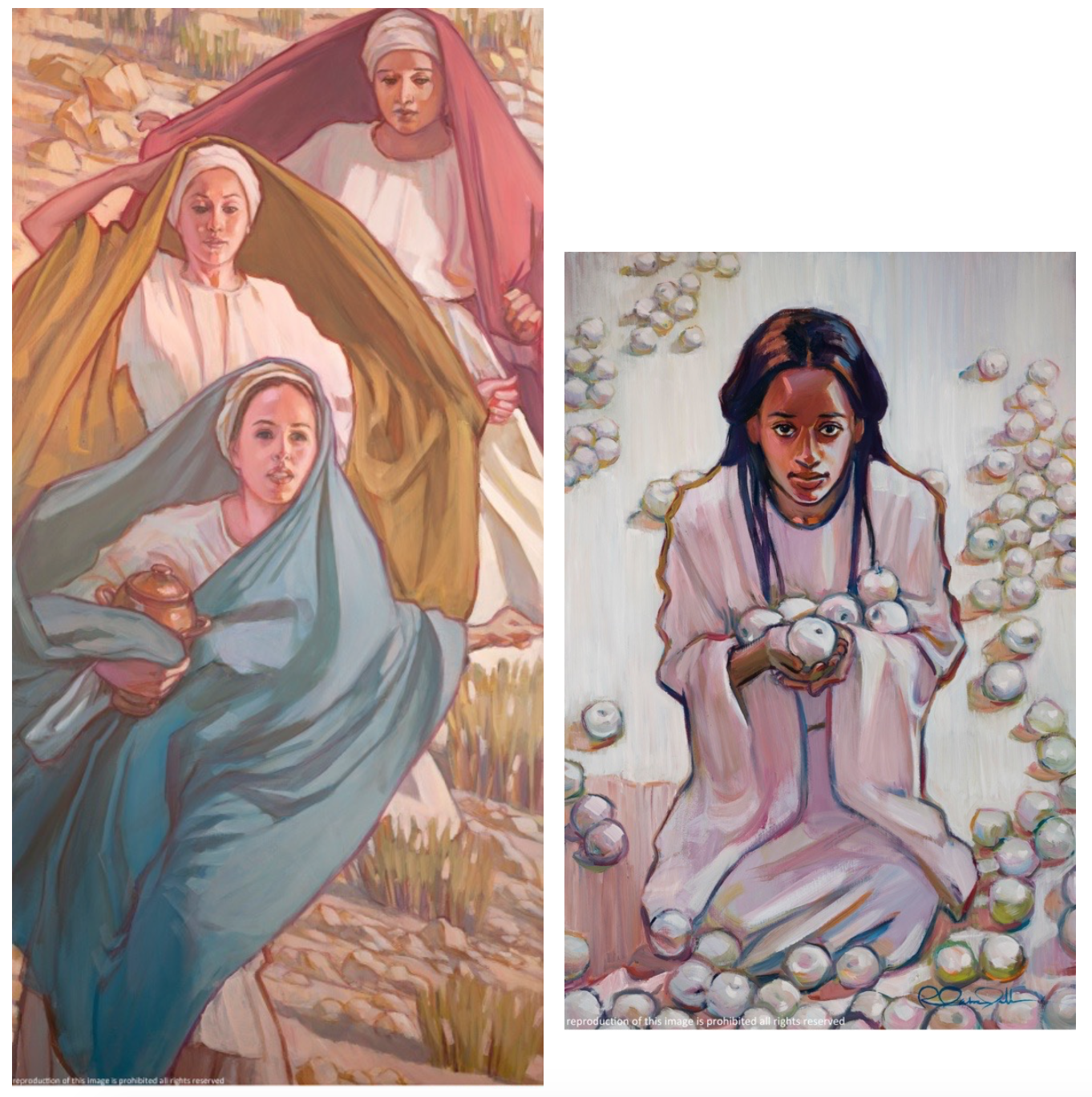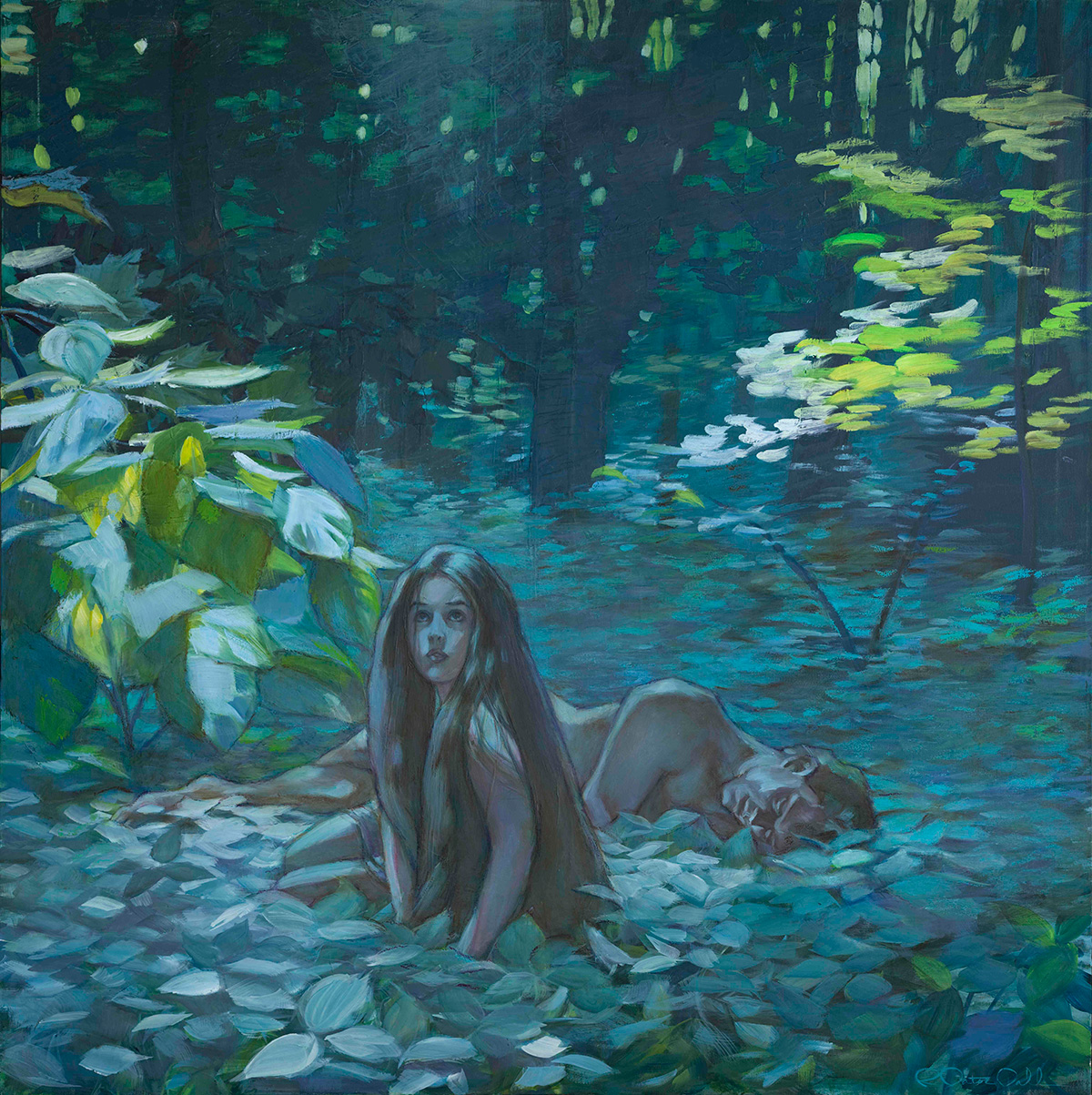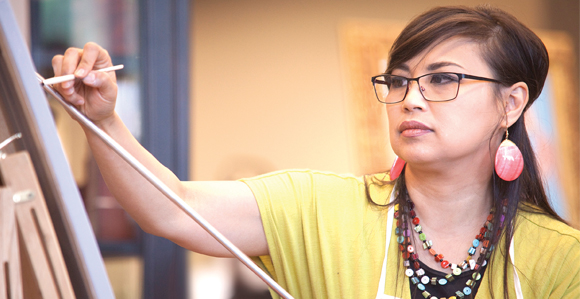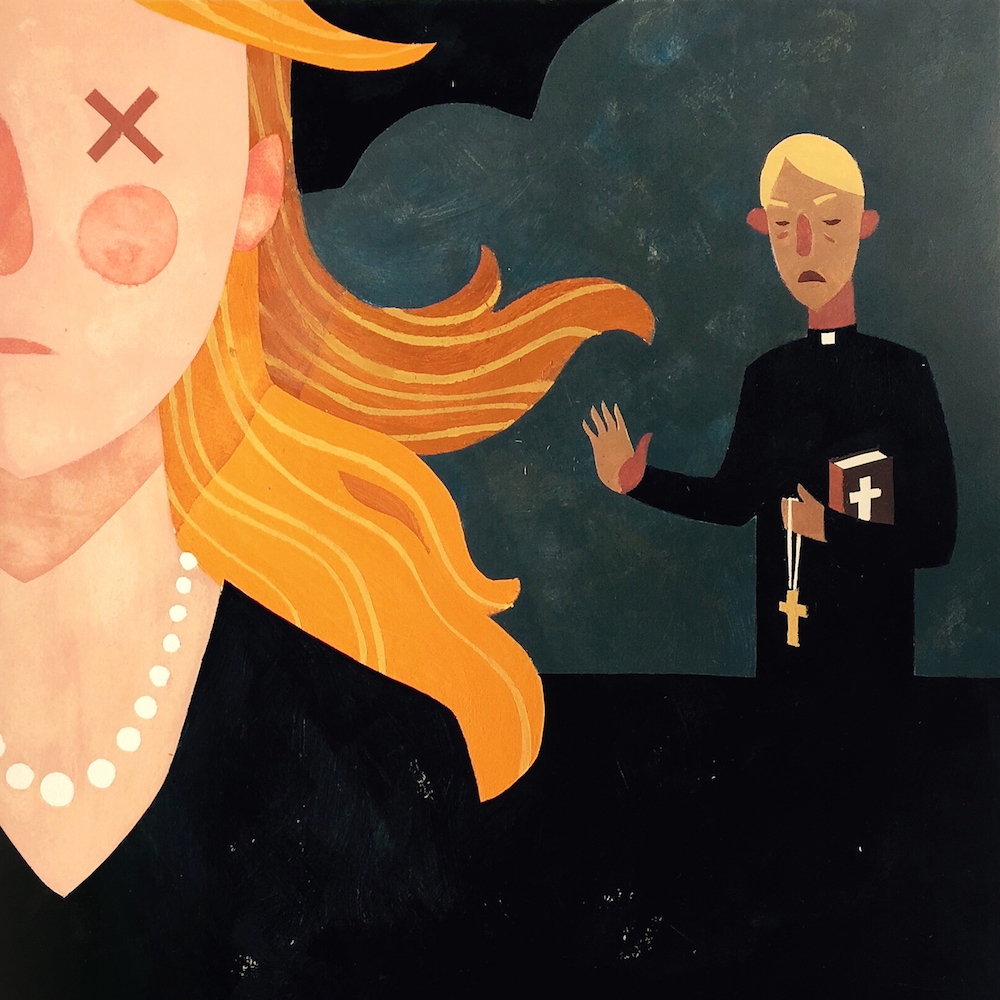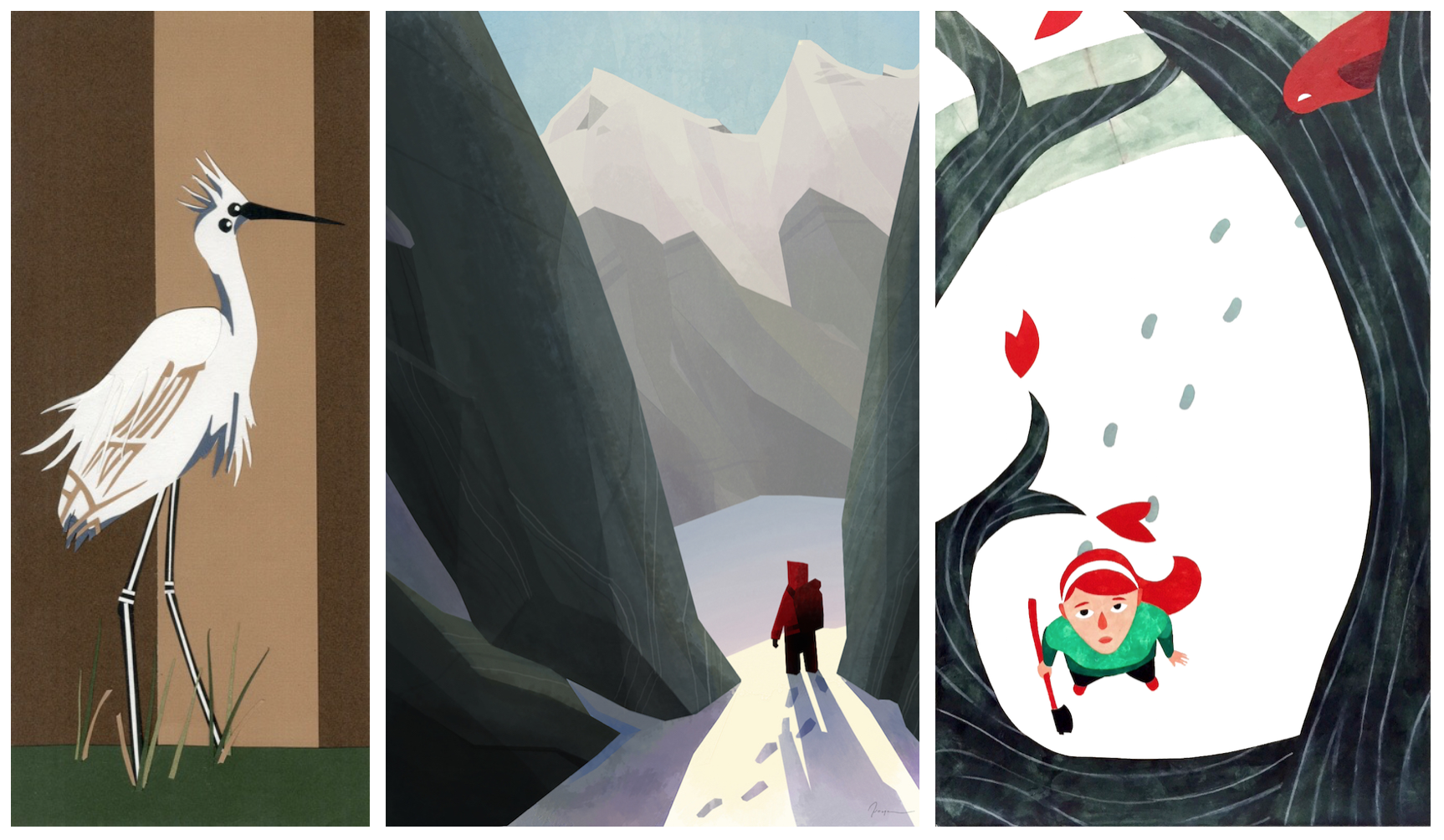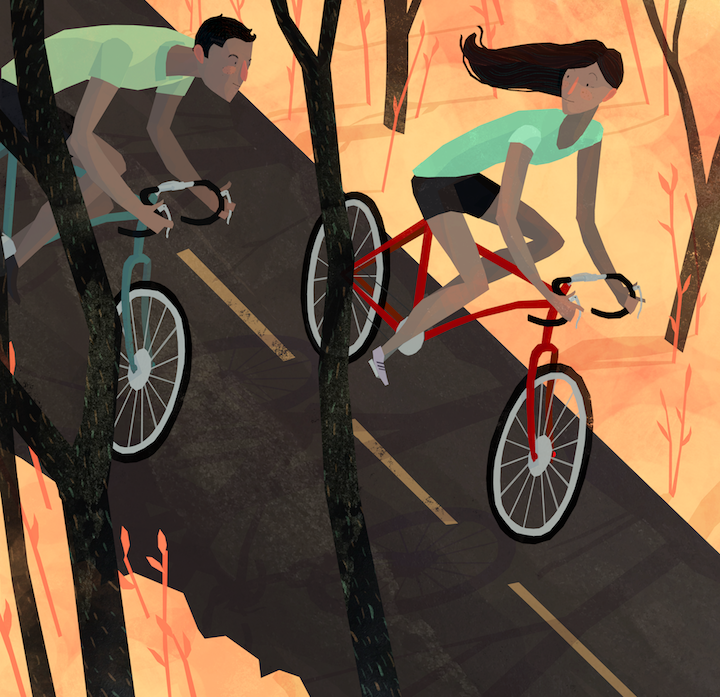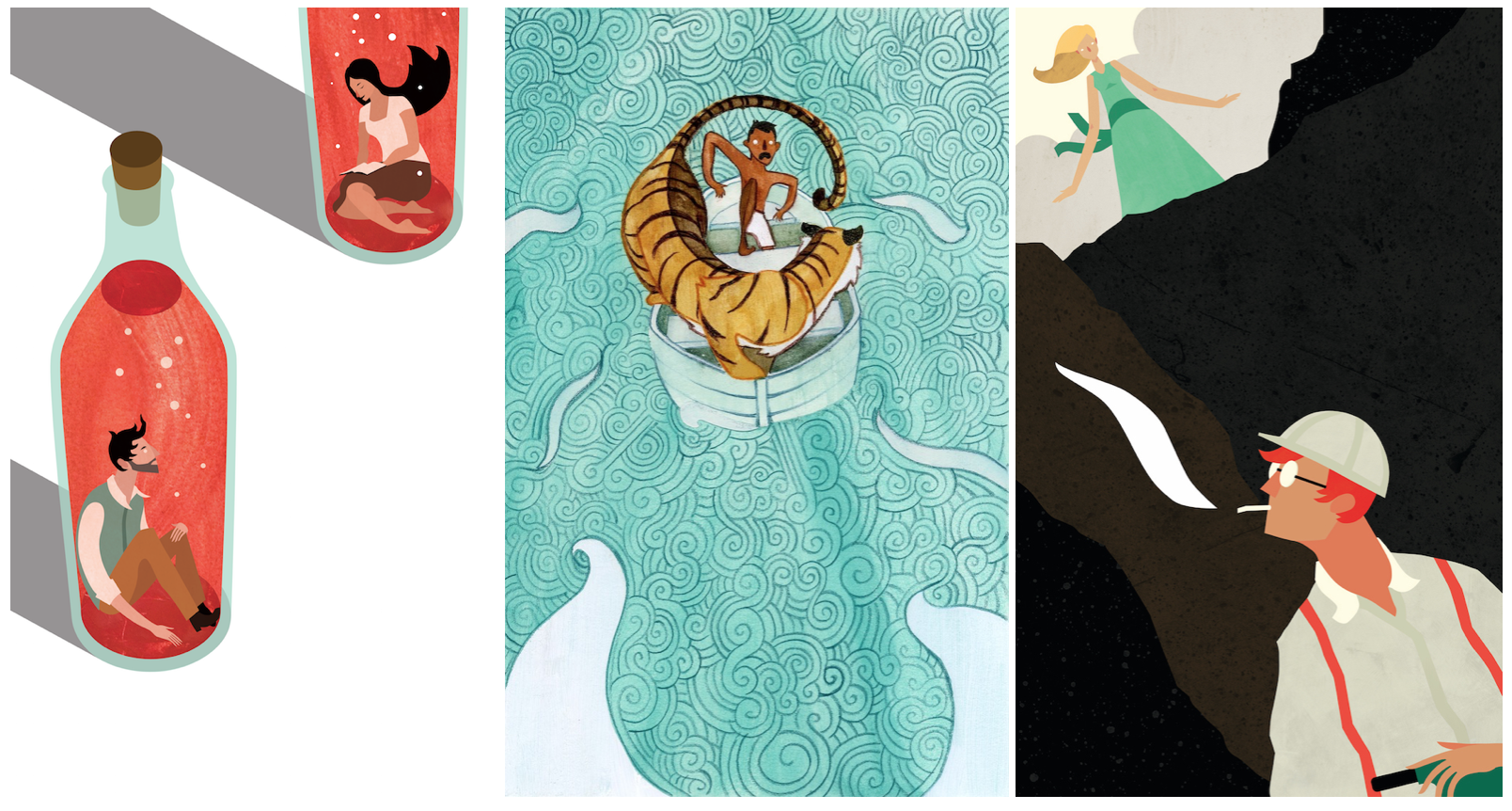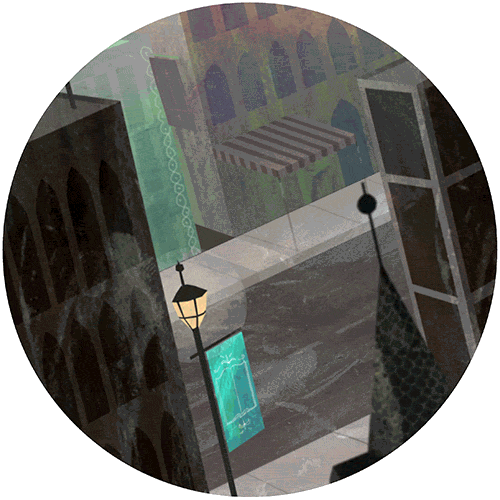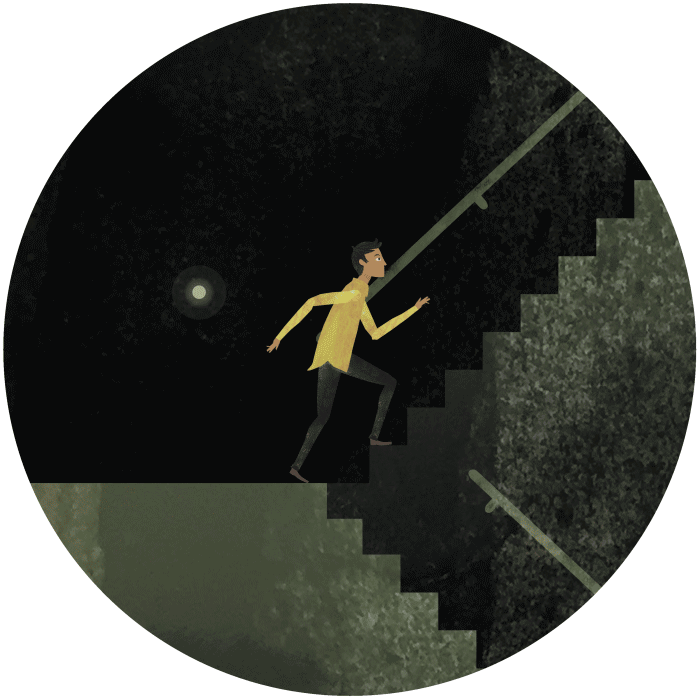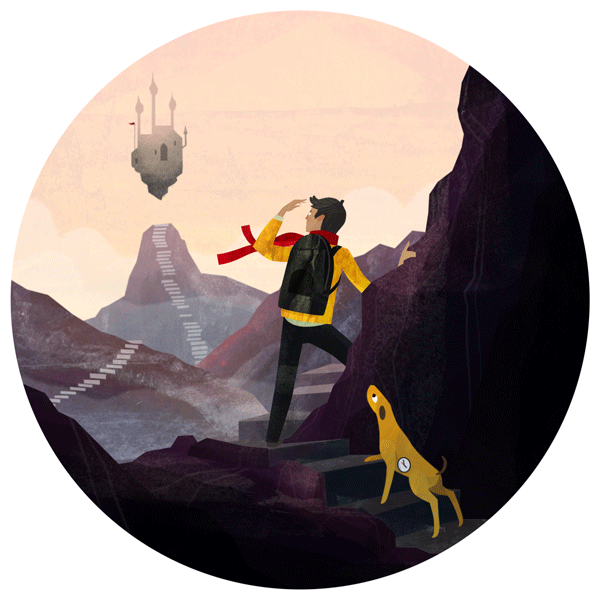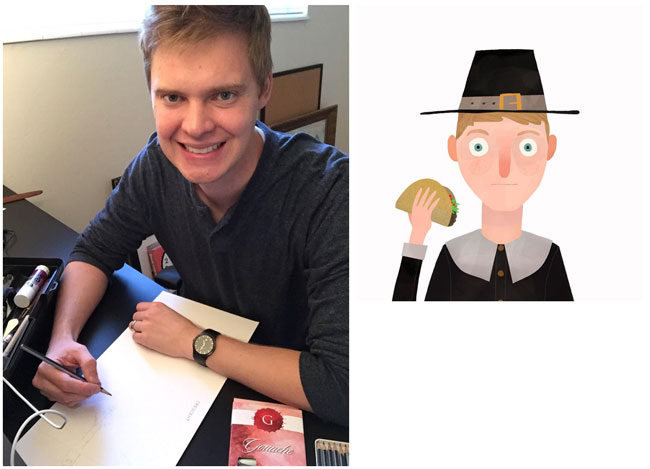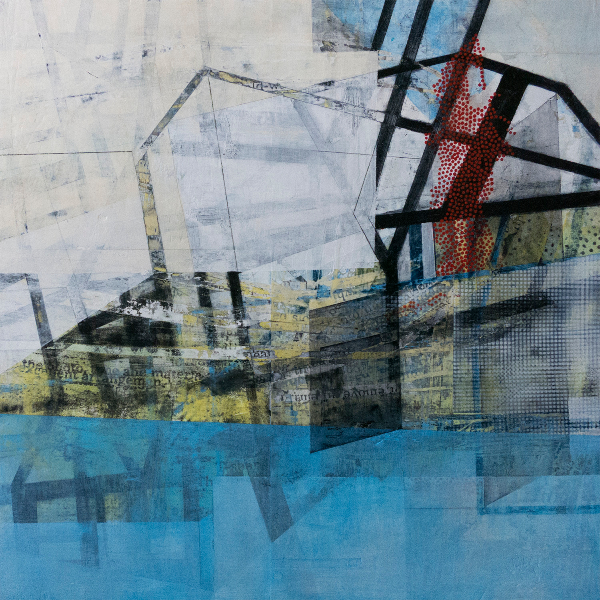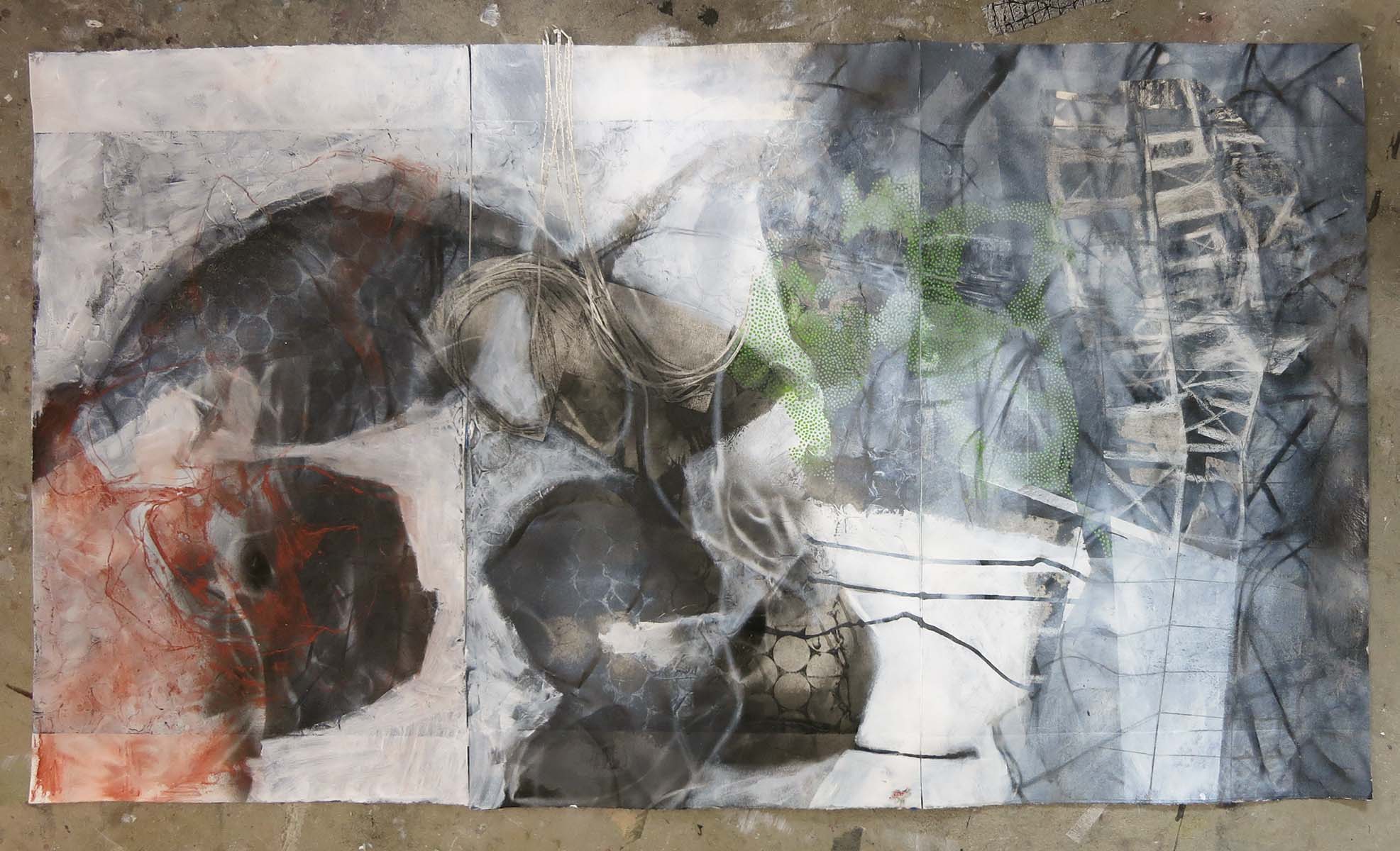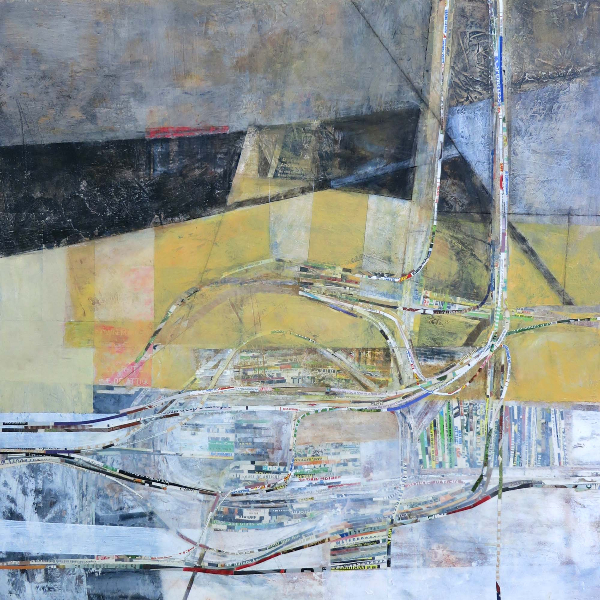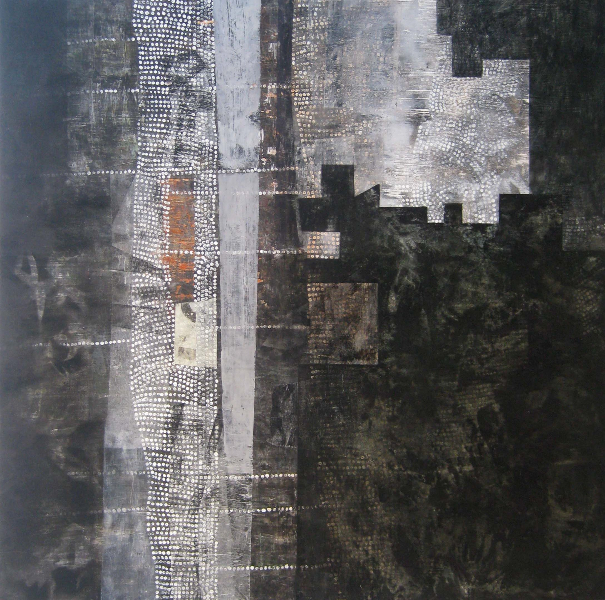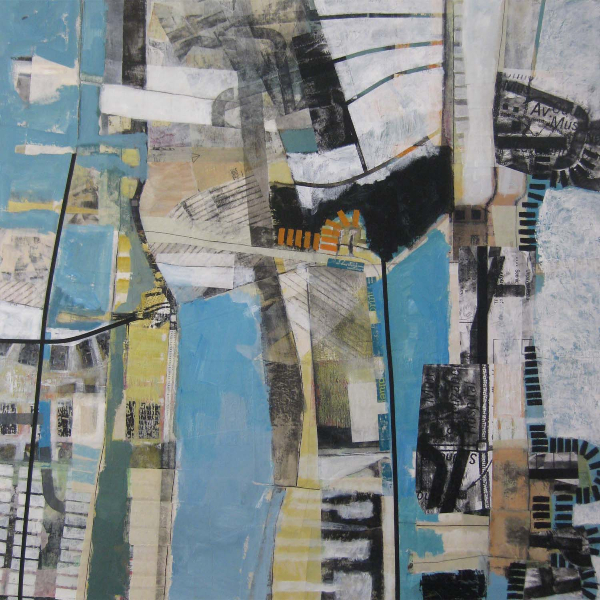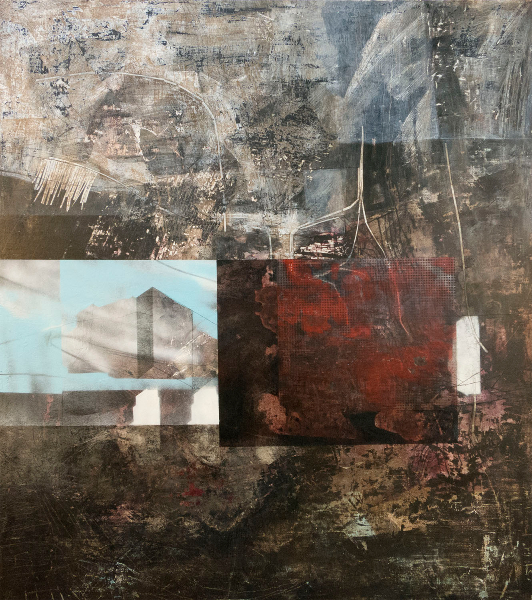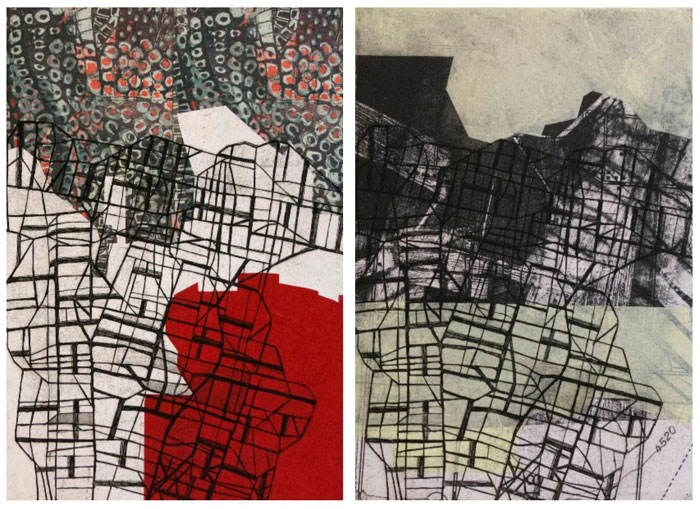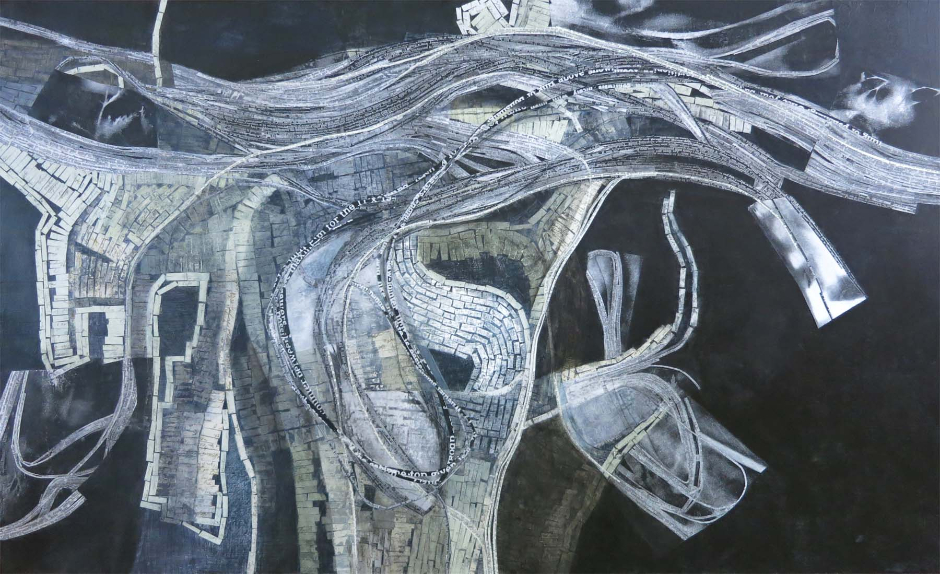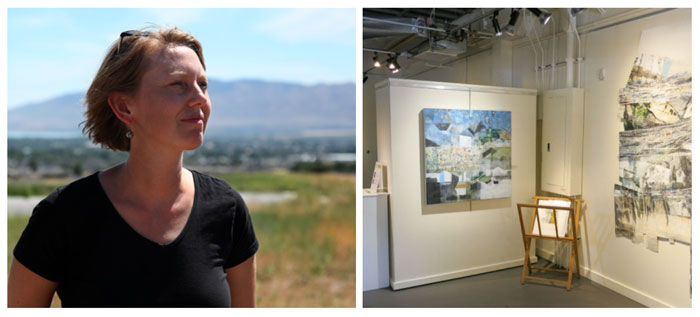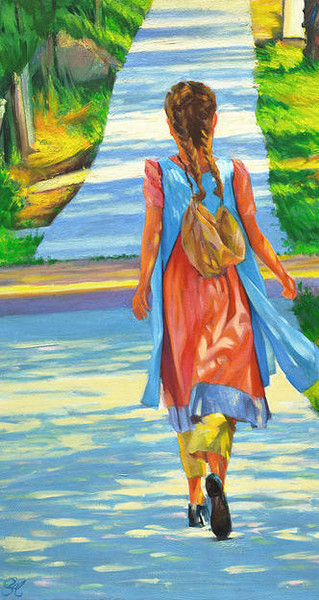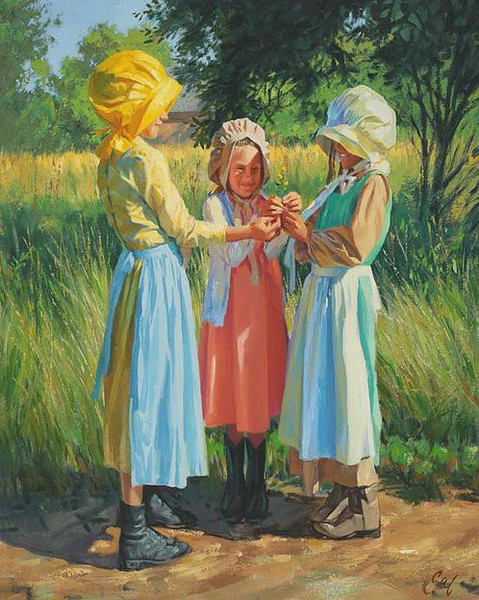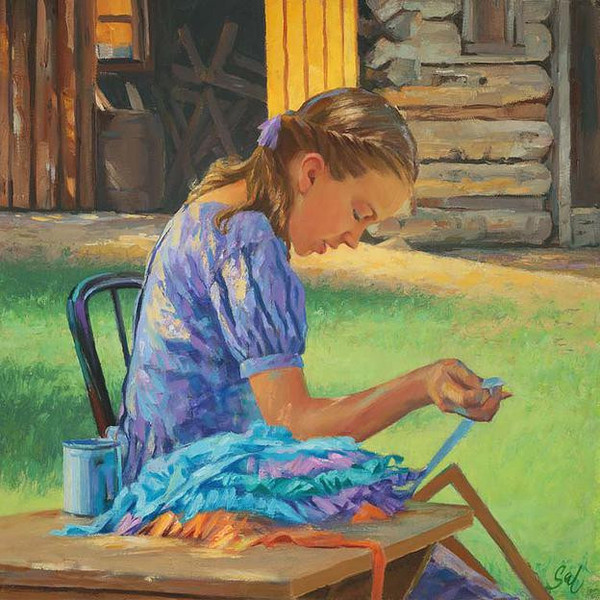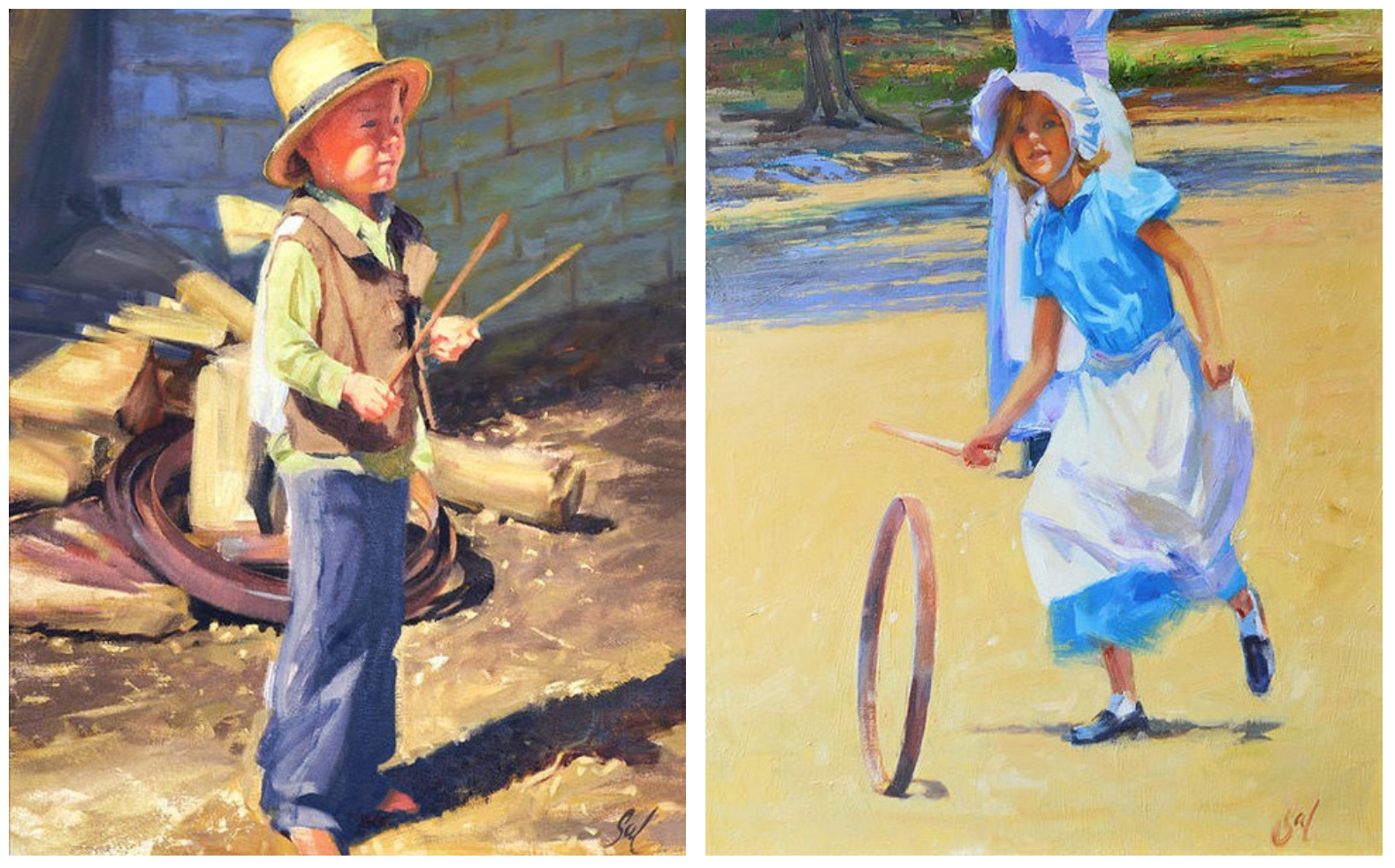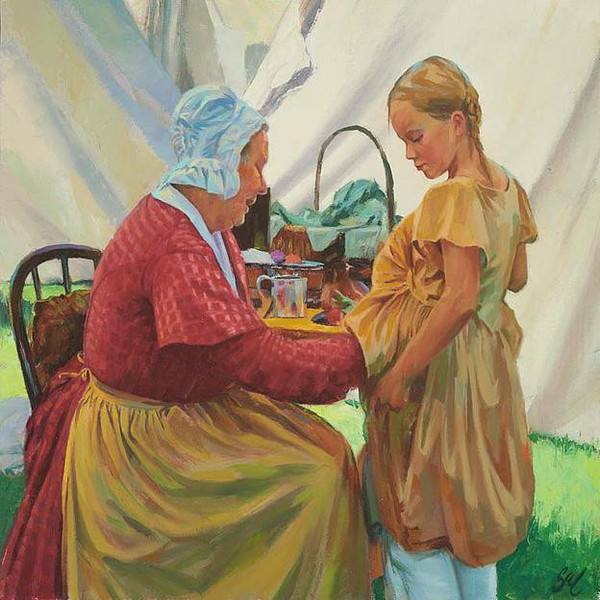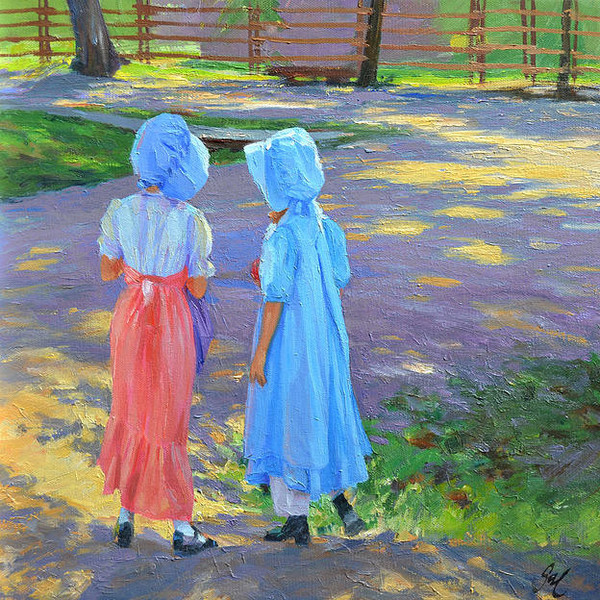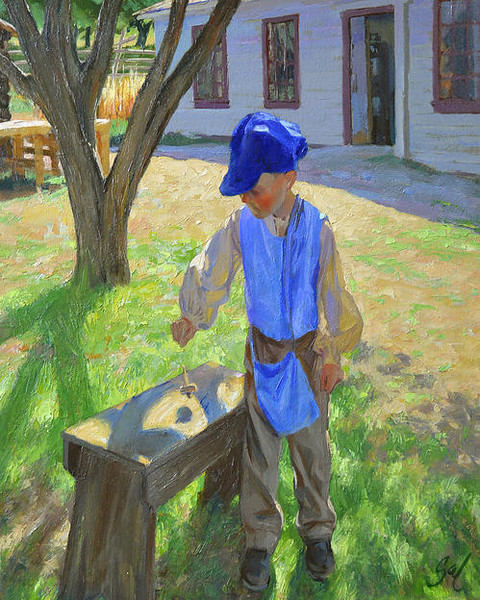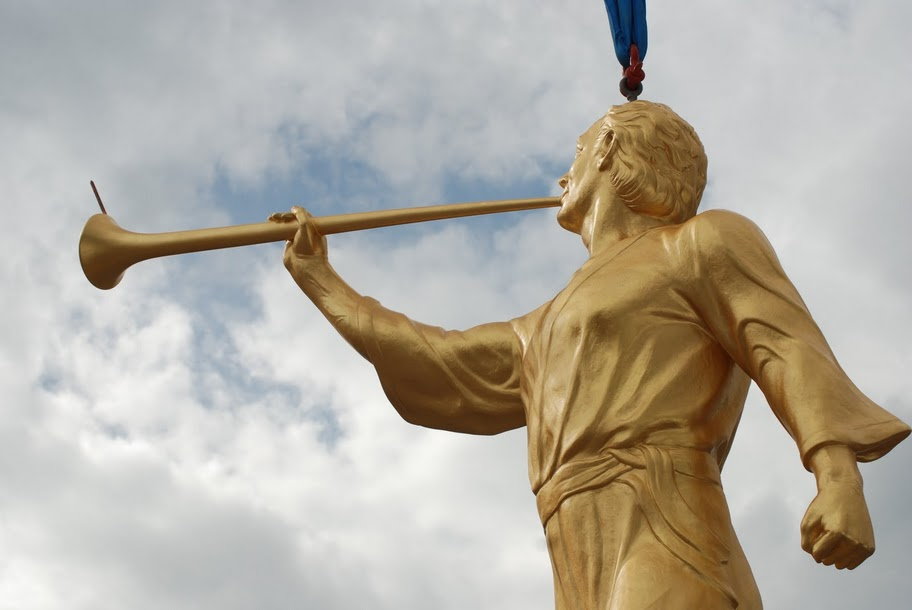
Guest Post: Brian Olson
Cyrus Dallin’s creation of the iconic Angel Moroni statue for the Salt Lake Temple did not begin the practice of placing a statue on every temple. Five temples would be built and dedicated as well as sixty-two and a half years would pass before another Angel Moroni Statue would be placed on a temple. This second statue, while keeping the horn and the upright position of Dallin’s Statue, would be as distinct from the Salt Lake Statue as that statue was from the Nauvoo weathervane. As construction commenced on the Los Angeles California Temple in 1951, Millard F. Malin was contacted by the Church about creating a new statue to go atop the new temple in a prominent California neighborhood.
Creating the Second Angel Moroni
Millard F Malin (1891-1975) studied sculpture at the National Academy of Design in New York City, chiefly under Herman MacNeil. Prior to that, he was a medical student at the University of Utah from 1914 to 1915 studying human anatomy. While a student in New York, Malin was hired by Gutzon Borglum to assist in sculpting the Confederate Memorial Carving at Stone Mountain in Georgia. Gutzon, who is best known for carving Mount Rushmore, was born in Idaho to LDS parents who soon after left the Church and moved to the Midwest. Malin opened his own art studio in the mid 1920’s in Salt Lake with the assistance of his closest friend, Edward O. Anderson. Anderson eventually became the chief architect for the Church and would call on Millard Malin to create the Baptismal Font Oxen and additional sculptures for the London England, Bern Switzerland, and Hamilton New Zealand Temples.
Malin’s Moroni, Angel in the City of Angels
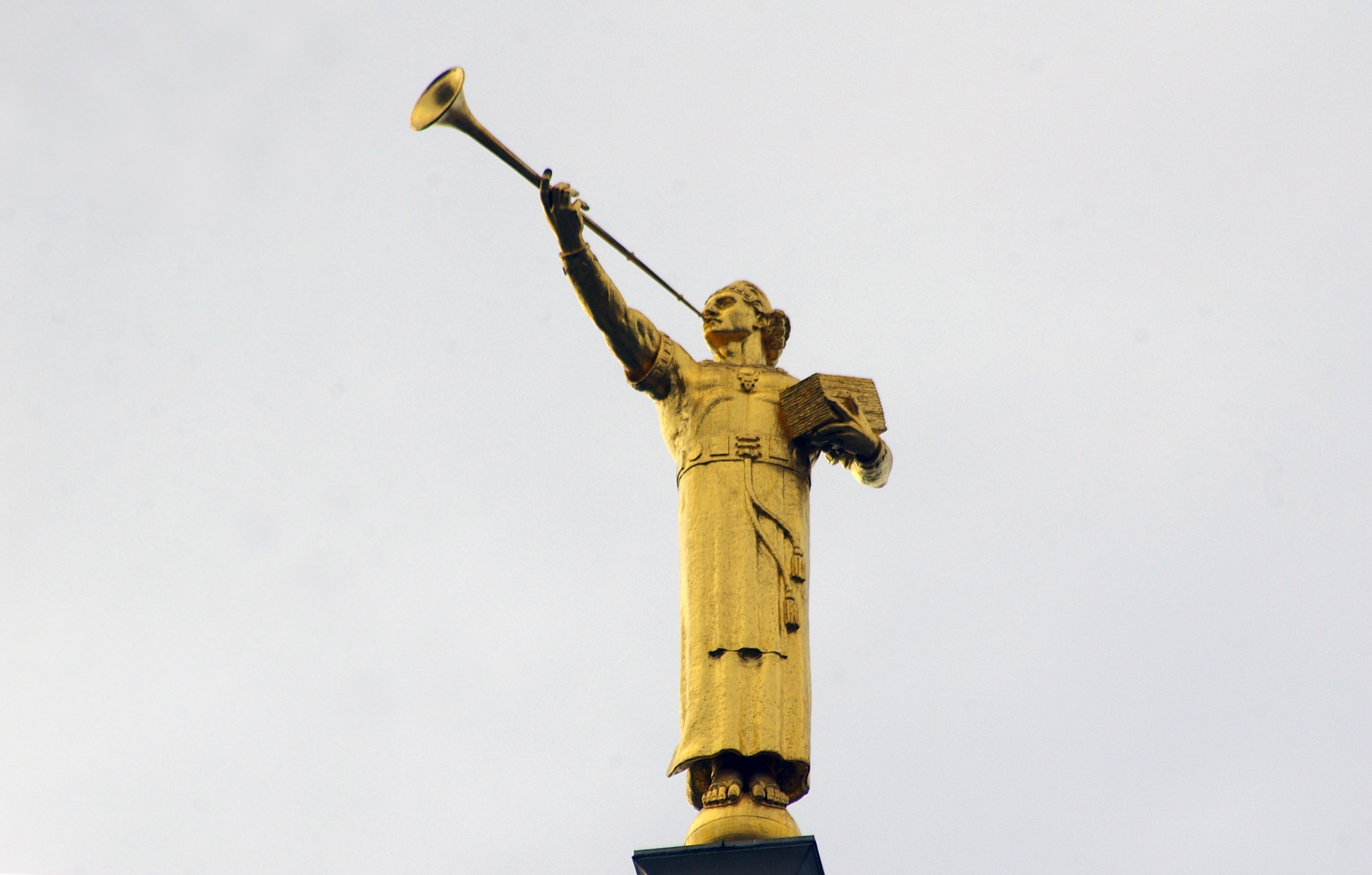
Designed specifically for the Los Angeles California Temple, Malin’s Angel (above) has not been used anywhere else. This Moroni was, according to the sculptor, heavily influenced by the Book of Mormon paintings of Arnold Freiberg, especially in regards to clothing and muscle tone. Besides the clothing, often described as Mayan in style, this statue has two other features not used on any other Moroni Temple statue to date. First is the manner that the right hand holds the trumpet, with the palm upturned and the trumpet resting in the hand. All other versions of the statue currently in use have the left hand palm down with a firm grip on the trumpet. Also, unlike all the other versions of the statue which feature bare feet, this statue wears sandals. This is also the first of two statues to be created for use on top of temples where the statue is holding gold plates in the crook of his left arm.
The Third Statue
The Los Angeles Temple Moroni was still not the start of the tradition of angels on the temples. The third temple to have an angel statue was the large new temple built in the U.S. Capital, Washington D.C. In the 18 years between the Los Angeles and Washington D.C. Temple dedications, the Church returned to the practice of building temples without statues. Five temples would be built and dedicated without an angel statue atop them. For this new temple, the Church would contact multiple artists to invite them to submit designs for a new statue to go atop the temple. Of the eight submissions the church received, they would choose the design of Avard Fairbanks.
Avard T. Fairbanks (1897-1987) was born in Provo, Utah to John B. Fairbanks, an artist famous for having painted murals in some of the early temples and a professor of art at the Brigham Young Academy in Provo, Avard T. Fairbanks comes from a family of artists. His brother, J. Leo Fairbanks was an artist like their father. Fairbanks’ son, Jonathan Leo Fairbanks is a sculptor in his own right and was curator of the Boston Museum of Fine arts in the early 90’s. Fairbanks’ nephew Ortho Fairbanks was also a prolific sculptor, creating many works as well. Fairbanks was a lifelong student and teacher. He studied sculpture at the Art Students League of New York, at the National School of Fine Arts under Jean Antoine Injalbert in Paris, and the Guggenheim Fellowship in Italy. He earned a degree from Yale University, a master’s degree from the University of Washington, and a Ph.D. in anatomy from the University of Michigan. He was an Assistant Professor at the University of Oregon, a teacher at the Seattle Institute of Art, an Associate Professor of Sculpture at the University of Michigan, and was the first Dean of the College of Fine Arts at the University of Utah. Fairbanks sculpted the friezes around the crown of the Laie Hawaii Temple, some of the sculptures on the temple grounds, and the oxen for the baptistry font. He also sculpted many works for Temple Square including busts of some of the prophets, the Restoration of the Aaronic Priesthood monument, the Restoration of the Melchizedek Priesthood Monument, and the Three Witnesses Monument .
Fairbanks’s Moroni, An Ensign to the Nations
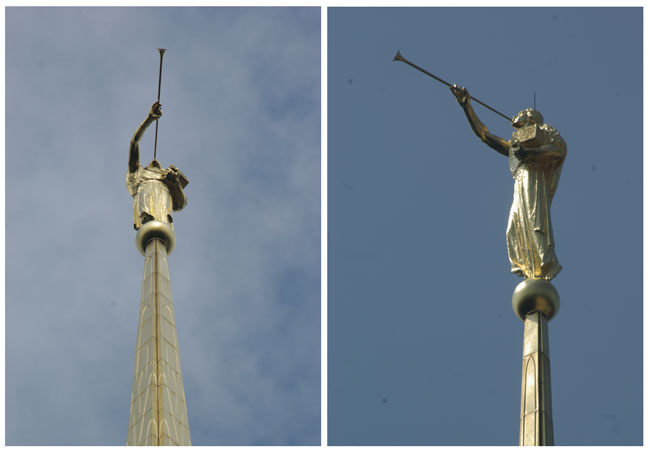
A new statue, a new style. Avard T. Fairbanks’s Angel Moroni is the only temple statue that has the trumpet pointing the same direction as the feet. All other statues have the trumpet and head turned at a right angle to the chest and feet. Like Malin’s Moroni, this angel holds a reproduction of the gold plates that the Book of Mormon was translated from nestled in the crook of his left arm. The robes on Fairbanks’ Moroni are long–longer than on any other Moroni. They cover part of the feet, well below the ankles. Most Moroni Statues have the robes end about or above the ankles. Originally, this was just an 18-foot statue (from feet to crown) for the Washington D.C. Temple. Later, three 15-foot versions were made to be used on other temples. The Washington D.C. statue is still the tallest Angel Moroni when measured from feet to crown.
The Fourth Moroni
Four temples would be built and dedicated in the time between the first use of the Fairbanks Statue until the first use of the fourth. Of those four temples, two used replicas of Fairbanks’ statue. By this point, there had been 20 temples built and dedicated. And of those 20, only a quarter of them had Angel Moroni statues. With the dedication of the Atlanta Temple in 1983 the statue came into regular use. And by regular use, I mean that 127 temples have been built and dedicated since then, and of those 127, only two did not receive a Moroni. Those two were both designed to have a statue, but due to legal issues, would wait to receive their statue until just short of one year after the dedication.
Additionally, since the construction of the Atlanta Temple, statues have been added to seven of the 15 original statue-less temples. In the foreseeable future, this trend will continue. As of writing, there are an additional 13 temples under construction, and two temples for which the Church has released the design. All of these 15 temples but one has been designed with an Angel Moroni statue. That one exception is the Paris France Temple, where a design choice is being considered to have neither spire nor angel. This would break a tradition running 30 years and including over 130 temples.
Torleif S Knaphus (1881-1965) studied under Harriet Backer at her Oslo school, under Lats Utne at the Norwegian National Academy of Craft and Art Industry, at the Académie Julian in Paris, and the Art Students League in New York.
His other works for the Church include assisting Avard T. Fairbanks with the oxen and sculptures at Laie Temple. He sculpted both the oxen in the Cardston Alberta Temple baptistery as well as a frieze titled Christ the Fountainhead. It stood outside the temple and was later moved inside the temple waiting room during a remodel and expansion. Copies of the frieze can be found in the waiting room at the Provo Utah Temple, on the exterior of the Edgehill Ward meetinghouse in Sugarhouse Utah, and various LDS chapels throughout the world. He carved the oxen for the baptismal font at the Mesa Arizona Temple as well as the eight terracotta friezes that run around the outside of the upper portion of the temple. He sculpted the oxen for the baptismal font at the Idaho Falls Temple and assisted with the oxen for the font of the Oakland Temple and the Moroni statue at the Los Angeles Temple.
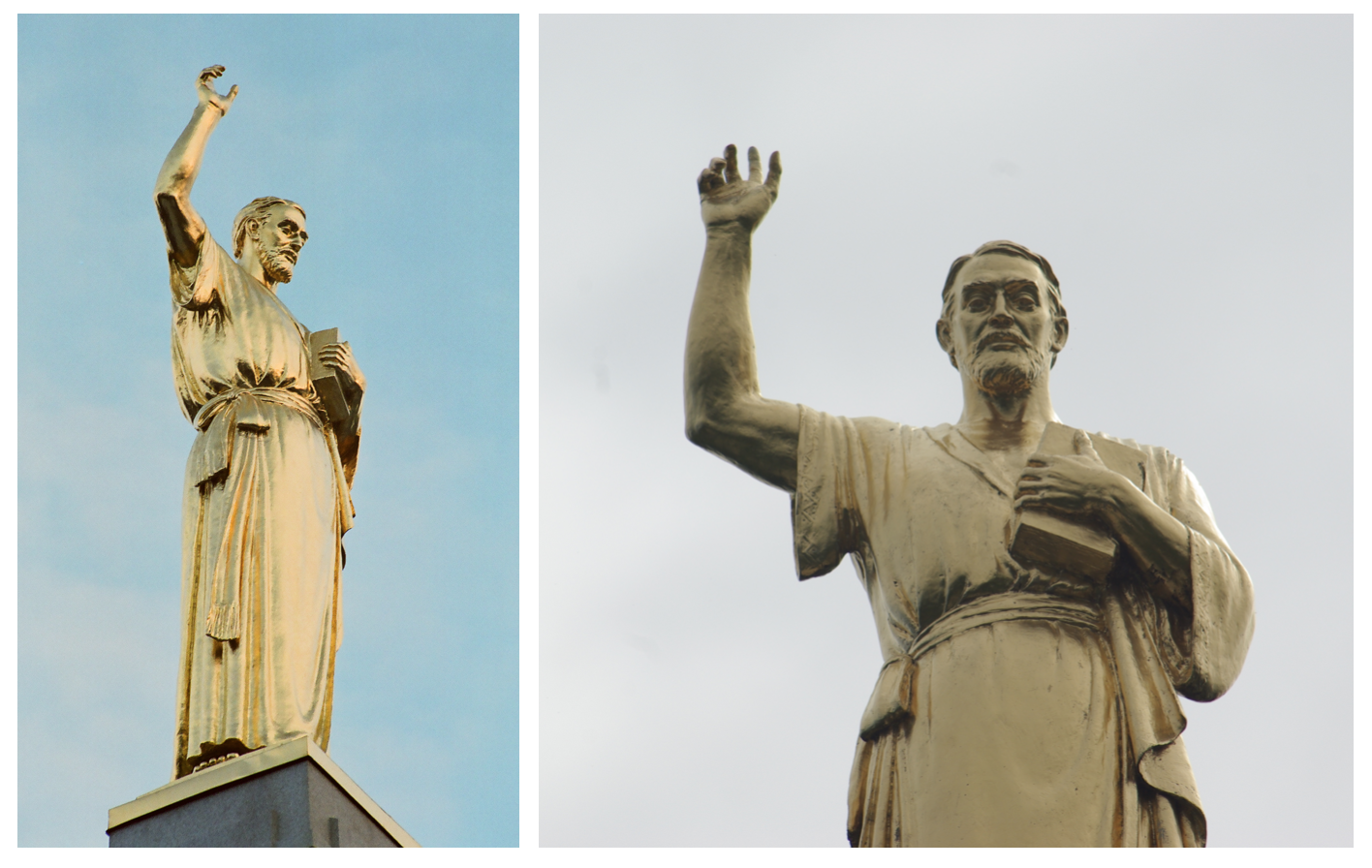
The work that Torleif is most famous for is the Hill Cumorah Monument (above), which was proposed by and entirely designed by Torlief Knaphus due to his great love for the restoration of the Gospel through the Angel Moroni.
Knaphus Moroni
Torlief Knaphus was asked to create a replica of the Dallin Moroni for use on the Washington D.C. Chapel in 1930. The statue is a foot shorter than Dallin’s original, and in regards to it, Knaphus said that while it looks the same from a distance the arms and shoulders are ‘beefier’ than the original. The statue was removed from the chapel in the 1970’s. A few years later an artist named LaVar Wallgren would recast the statue in fiberglass to be used on the Idaho Falls temple and a second recast to be used on the Atlanta Temple. The Idaho Falls statue remains, but the Atlanta Statue was removed, replaced with another model, then refurbished. It now sits on the Boston Temple. This Boston Statue, a recreation of the Dallin Statue, is on the temple closest to the Massachusetts home where Dallin lived for most of his life.
The Fifth, Sixth, and Seventh Moroni’s
While the Moroni tradition started mostly with the fourth statue, it was these later statues that made it possible.
Karl Quilter (1929-2013) studied art and industrial design at the University of Utah and was mentored by Avard T. Fairbanks, sculptor of the third version of the Angel Moroni. While there, he and LaVar Wallgren experimented with casting sculptures in fiberglass instead of the more traditional metal. The effort was noticed by the Church, which would lead to the Church commissioning two statues for temples in the late 1970’s and eventually a third in the late 1990’s. Karl Quilter’s statues were lighter, easier to transport to locations around the globe, cost less to make, and could be lifted into place by smaller cranes or even helicopters. Additionally, they did not require the heavy structural reinforcement earlier statues required due to being cast from metals. This allowed for statues to be placed on smaller temples and narrower spires, including temples that had not been originally designed to have the statue. Later in life, Quilter would serve another mission for the Church, during which he sculpted the nativity scenes that are now seen on many temple grounds during the holiday season. Quilter’s three statues are often mistaken for one statue, or at best, three different sizes of one statue. But each statue is different with a unique pose. Here are the features of each statue that are unique.
Quilter’s 1982 Moroni. The quickest way to identify the first statue is to look at it from the front (below left). The hem of the robe on this statue is windswept and blows out and away from the feet to the viewer’s left. The statue’s left hand is held away from the body at a greater angle than the other two Quilter statues. The left wrist is bent down slightly. The robe on the left sleeve is smoother, devoid of defined wrinkles, and the cuff hangs round and loose on that arm. The left leg comes straight down from the waist and bends back at the knee, projecting forward slightly in front of the chest. Seen from the side, the left arm is bent forward at the elbow. The left hand is clenched in a fist. Close up, the right hand the fingers holding the trumpet are spaced apart, except the thumb which overlaps the pointer finger and touches the middle finger. This statue is 7 feet in height, foot to crown.
Quilter’s 1985 Moroni. Quilter’s second statue is 10’6″ feet tall (below middle). When viewed from the front, the hem of the robe hangs straight down from the waist, not being blown to either side. The left arm is closer to the body. The wrist on the left arm has no bend to it. The left hand is clenched in a fist in this statue as well. The left leg bends forward at the knee like the previous statue, but also bends slightly to the outside, emphasizing the left ankle being behind the right foot. When viewed from the side, there is no bend in the elbow. The cuff is tightly windswept and blown out behind the arm. On close inspection of the right hand, the fingers touch together and the thumb touches the side of the pointer finger without overlapping it.
Quilter’s 1997 Moroni. Standing at just 6’10” tall, this third statue of Quilter’s was sculpted primarily for the Nauvoo Temple (below right). The truly unique feature of this statue is the left hand. It falls down at the statue’s side like the two preceding statues, but unlike any other Moroni in use, the hand is relaxed and open. Another identifying feature of this statue is the robes. They have a heavier, more layered look, and appear far more disorderly and windswept than Quilter’s previous statues.
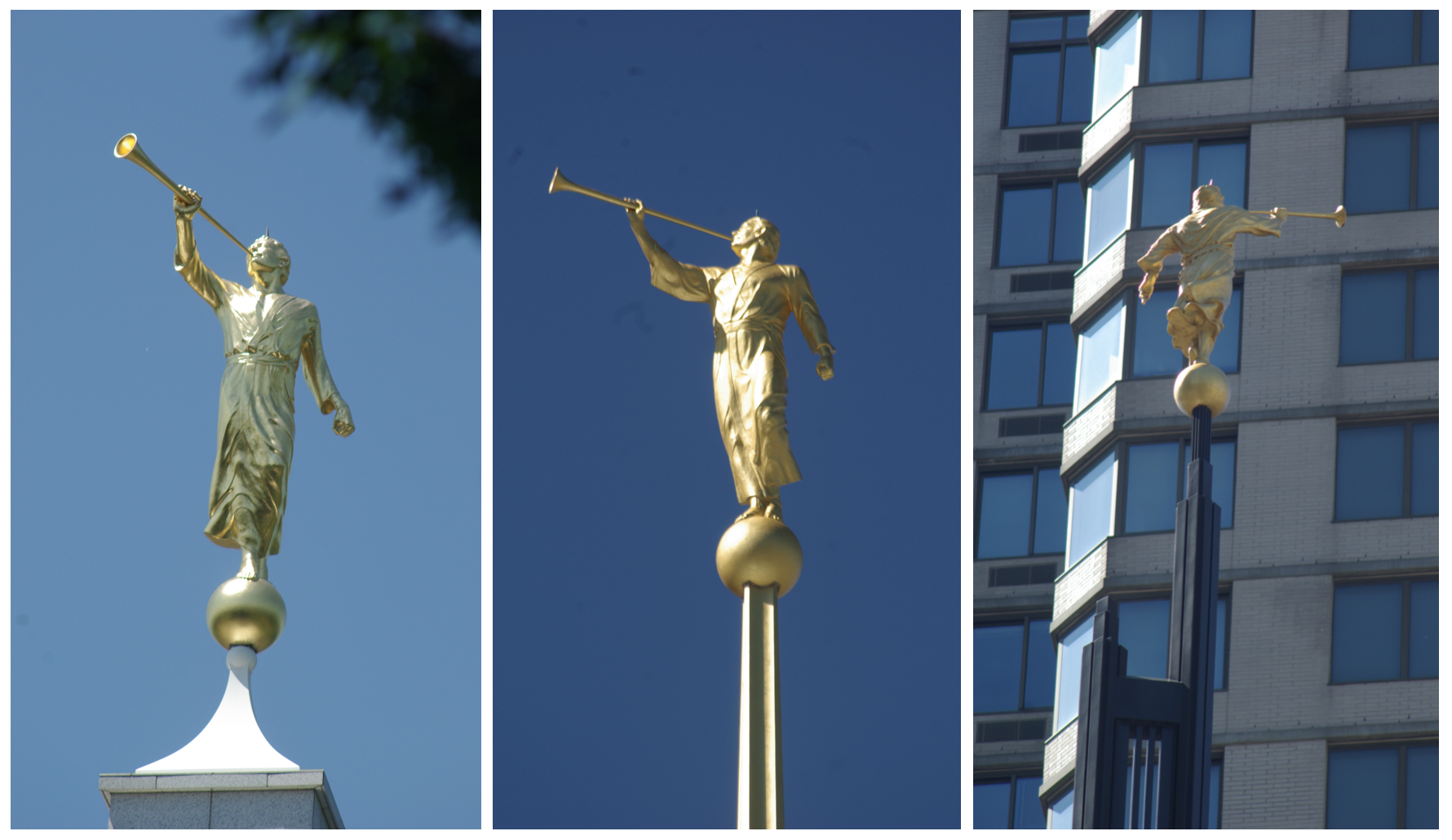
The Eighth Moroni
LaVar Wallgren (1932-2004), though not classically trained as an artist or sculptor, was asked to come up with a life-size Angel Moroni for the smaller temples, one that would be smaller than the other molds already in use. He knew upon being asked that it would have a scroll, like the angel mentioned in Revelation 14:6-7. He sketched then sculpted the new statue, which was approved by the First Presidency. The new statue was 5’ 11” with the face of a much younger man than the other statues. Originally intended to be white rather than gold leafed, the only white statue placed on the Monticello Utah Temple proved to be too difficult to see against the clouds. The Monticello Temple statue was then replaced with the 7 foot Quilter Statue. The subsequent statues were given gold leaf before being placed on temples. As a highly skilled craftsman who specialized in the casting of fiberglass, a skill he learned with Karl Quilter, Wallgren cast all of the Karl Quilter Angel Moroni statues in his Kearns, Utah studio.
Wallgren Moroni
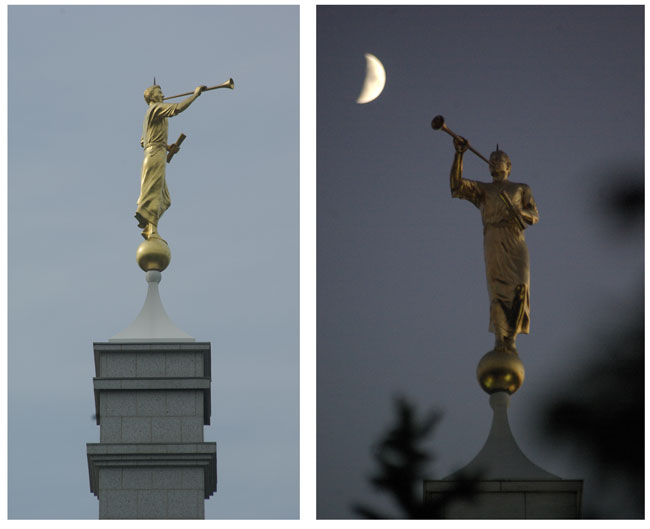
The Wallgren Moroni was designed specifically to use on the smaller temples and stands at 5’ 11 inches tall. It has two features that make it very unique. First and most obvious is the scroll the statue holds in its left hand. The second identifying feature is that the Moroni Wallgren created is far younger than any other Moroni statue. The face is clearly that of a younger more youthful prophet, rather than an older and wiser one.
—
This month we are featuring a four-part series on the Angel Moroni sculptures atop most of the Mormon temples around the world. These guest posts come from Brian Olson who has spent more than 10,000 hours modeling, digitizing, and photographing Mormon temples. His free PDF entitled Know Your Moroni can be found at Photogent.com. Part One profiled Creating an Icon, Part Two profiled Sculpting Angel Moroni, and Part Four will look at Rendering Angel Moroni.
Images courtesy LDS.org and Brian Olson.
